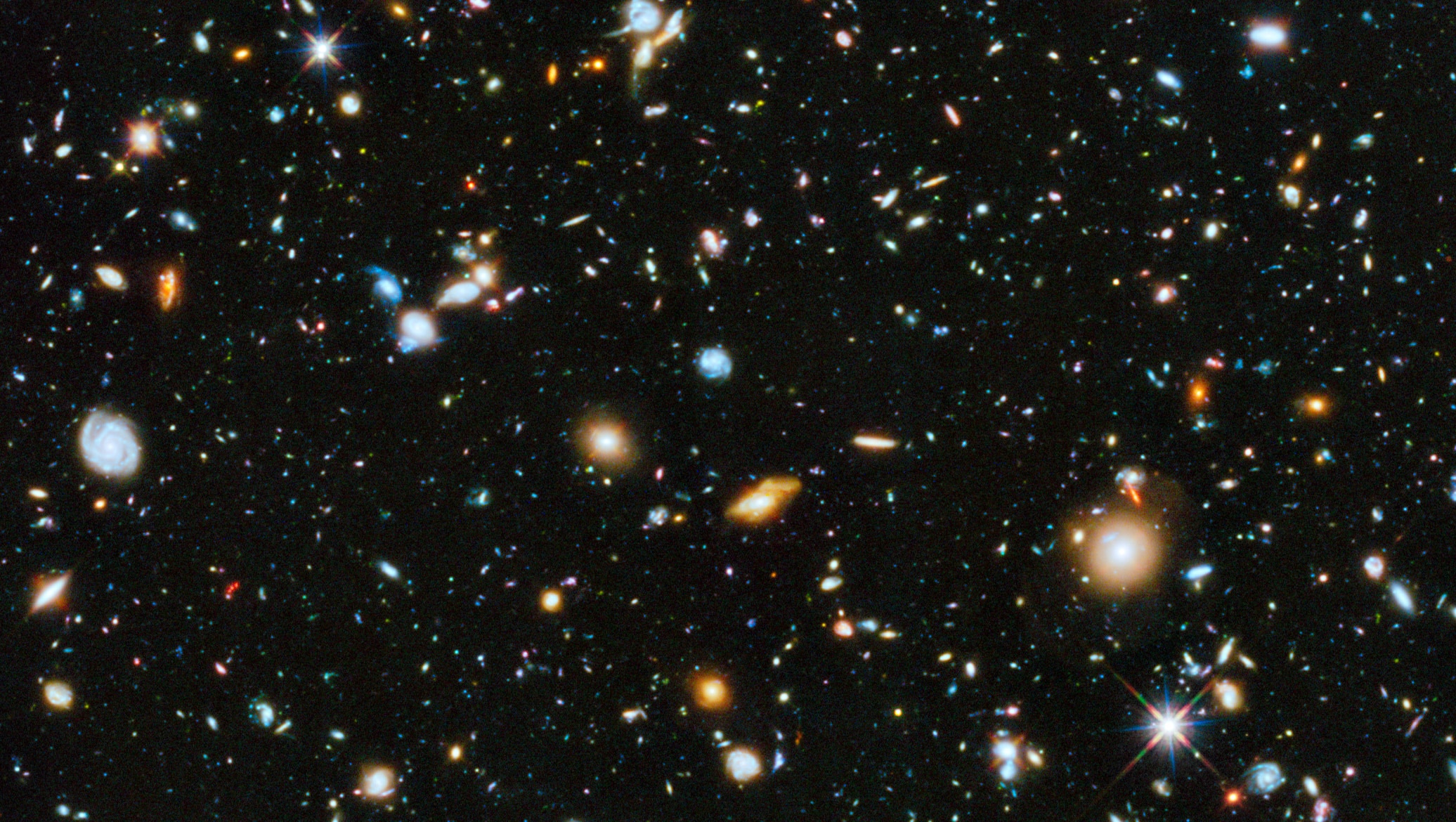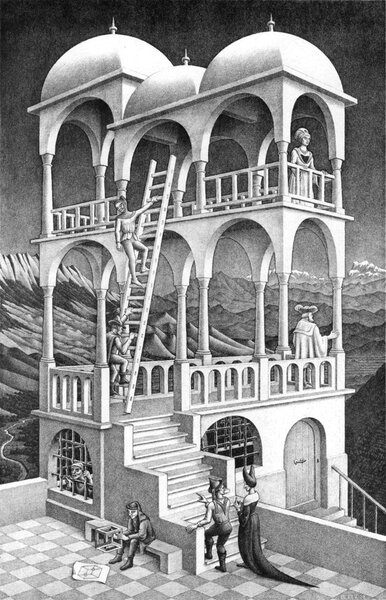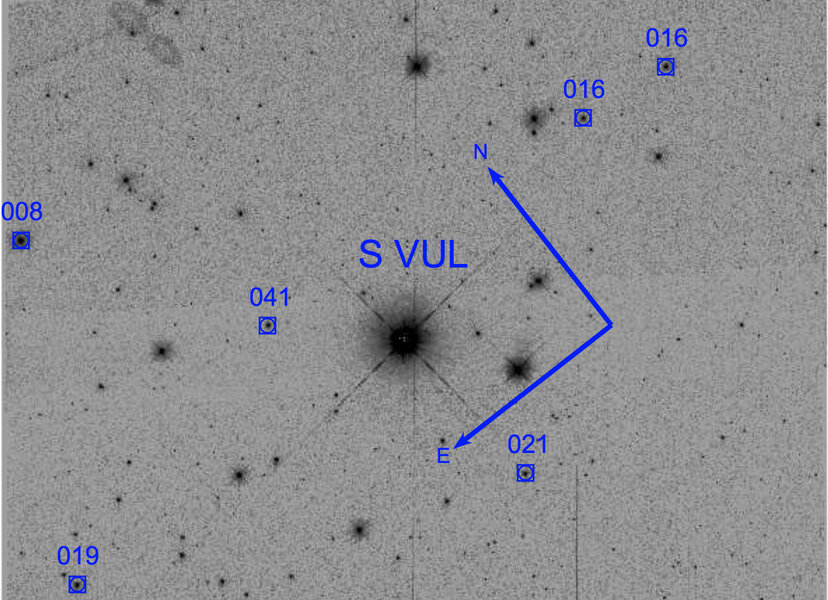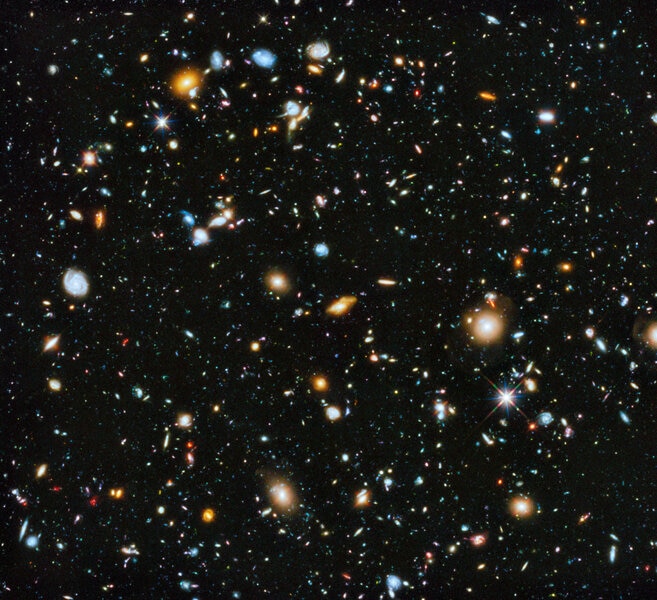Create a free profile to get unlimited access to exclusive videos, sweepstakes, and more!
How fast is the Universe expanding? The answer depends on how you measure it, and that's a problem

The Universe is expanding.
Wow, I still love being able to write that down. It's such a wonderful, compact, simple statement, yet has implications so profound it may be decades before we understand them all. And we've known it to be true for a century already.
But it's true. We have a lot of independent lines of evidence showing it to be so. This means the Universe was smaller in the past, and if you run the clock backward about 13.8 billion years, you find that everything in the cosmos was squeezed into a single, incredibly hot and dense spot. Run the clock forward again, and you get the initial moments of the Universe: the Big Bang.
A hugely important question that arises naturally is: How fast is the Universe expanding? It turns out that more distant objects are moving away from us faster, so we use an odd unit to describe the expansion: a velocity per distance. Double the distance and the velocity an object recedes doubles as well.
This number in astronomy has a name: the Hubble Constant. Edwin Hubble tried to calculate it back in the early 20th century, and we've been able to refine it a lot since then. It's around 70 kilometers per second per megaparsec (a megaparsec, or Mpc, is one million parsecs, or 3.26 million light-years; for comparison the Andromeda Galaxy is just under 1 Mpc away from us). So, in a freely expanding Universe, an object 1 Mpc away will move away from you at 70 km/sec. An object 10 Mpc distant will run away at 700 km/sec, and so on.
Weird, right? But here's where things get really weird. There are a bunch of different ways to measure the Hubble Constant. One is to do so locally, by looking at nearby galaxies, measuring both their distances and their velocities. We have lots of ways to measure both (which I'll get into a bit more in a moment). When you do that, you get a Hubble Constant of 73 km/sec/Mpc.
Another way is to look at the early Universe, at things very far away. About 375,000 years after the Universe formed, it had expanded enough to become transparent. It was still hot, and now, today, we see that leftover heat permeating the entire sky. As the Universe continued to expand that heat cooled (you can also think of it as the light from that fireball having been redshifted as the Universe expands away from us). We now see it as a continuous glow of microwaves everywhere we look.
By examining that glow very carefully, we can learn a lot about the conditions of the Universe back then. We can also calculate the Hubble Constant that way, too, and the number you get when you do so is about 67 km/sec/Mpc.
Um. Wait. Those two numbers are different. That's awkward.
It really is. And it gets worse. All the local methods get the higher number, and all the distant, early Universe ones get the smaller number. It's as if the Universe doesn't agree with itself.
It's like building a bridge across a canyon, starting at both ends, only to have the two not meet in the middle. It reminds me a little bit of M. C. Escher's drawing "Belvedere." It doesn't make sense.
In fact, when these numbers were first determined they weren't so far off, because the uncertainty in the measurements was high. For a while we didn't know the Hubble Constant to within a factor of two. But as measurements got better, we started to see them split off.
Here's where things get fun: A new project has been trying to nail down the local number. It was spearheaded by old friend and grad student colleague Adam Riess (who was instrumental in finding out the Universal expansion is accelerating — more on that in a sec, too — and has earned some decent accolades because of it). They used Hubble Space Telescope to look at a very specific kind of star, called a Cepheid variable. These stars expand and contract over time, and get brighter and dimmer as they do. A century ago it was discovered that the period, the time it takes for them to brighten and dim, was tied to the total amount of energy they give off.
That's huge: It means that if you can measure their period, you can find out their luminosity. And then if you just measure how bright they appear, you can find their distance! That's crucial, because we see Cepheids in other galaxies, which means they give us a method to determine the distances to these galaxies. In fact, it was Hubble's team that used this to determine the distances to some nearby galaxies back in the 1920s.
Riess's team looked at 7 Cepheids in our own Milky Way galaxy and measured not just how bright they were, but also their parallax, their apparent change in position as the Earth moves around the Sun (for details, may I suggest watching "Crash Course Astronomy: Distances"?). By measuring this shift over several years, they can get very accurate distances for these stars.
Another advantage is that we use Hubble to observe these Cepheids in other galaxies, so this puts all the observations on an even footing; it's harder to get everything consistent when you use different observatories.
So this new work has been able to tighten up the distance measurements to these Milky Way Cepheids, which range from roughly 5,500 to 12,000 light-years away. Using these better measurements to then bootstrap the distance to extragalactic Cepheids, Riess's team finds that the local value of the Hubble Constant is 73.48 ± 1.66 km/sec/Mpc, a change of about 4% from the old value.
But more importantly, really, is that they lowered the uncertainty in that value, meaning we think this value is more accurate. That in turn means that the lower value found using early Universe measurements really is different. It's not just that our measurements are shaky; the Universe really is telling us things were different back then. The odds of this being due to coincidence or something not real is about 1 in 4,600. I'll take that bet. This is real.
What does all this mean? Well, in a nutshell, it means the Universe appears to be expanding more quickly now than it did in the past. To be clear, we knew this already: Astronomers discovered the Universal expansion was accelerating back in 1998 (Riess was on one of two independent teams who found this). But these new results seem to indicate the acceleration is even higher than we thought.
So what does that mean? That's a good question, one for which there are too many possible answers. It's possible that dark energy, the weird entity behind the acceleration, may be stronger than expected. Perhaps it grows with time; that's an idea that's been tossed around for a while. The thing is, we just don't know what the heck dark energy is, what it's made of, or how it behaves. These new observations could help.
But it may yet be something else. Dark matter plays into this as well: Some form of matter that we think doesn't play well with normal matter and light, so it's impossible to see directly. It outmasses normal matter by a factor of 5 in the Universe, and we know it's out there. But, if it behaves in some unusual way, like maybe interacting with normal matter just a little, that could change how the Universe itself evolves over time.
Here's the thing: We don't know. This is all pretty new, and pushes our equipment and our theories to their very limits. That's why this is still getting nailed down. Remember, we've only known there were other galaxies for about a hundred years, and that the expansion is accelerating for the past 20. We're just getting started figuring this out.
But my favorite part about all this is that we will figure it out. That's what humans do; that's what science does. The Universe is a pretty baffling place, and our brains aren't really evolved to be comfortable pondering it. But that's in fact why we have science, to help us understand. Couple that with math, engineering, and our unstoppable, insatiable curiosity, and even the cosmos itself will yield its secrets to us.
The Universe is expanding faster every day, but so is our ability to grok it. We'll catch up.

















